
Intro to Shaders in Unity
Instructor: Jadon Mullinex
Included with VFX-A All Access
Learn all about node-based Shaders and how to create them inside of the Unity game engine. Get to know one of the most powerful tools for creating FX.

3.5+ Hours
This course includes over three and a half hours of Unity VFX training.

Skill Level
Beginner Level One course for new and aspiring VFX artists.

Software
Unity

Instant Access
This course is immediately available to All Access members.
Course Breakdown
Lesson overview.

Intro to Unity Shaders
Get started with this quick intro video from your instructor.
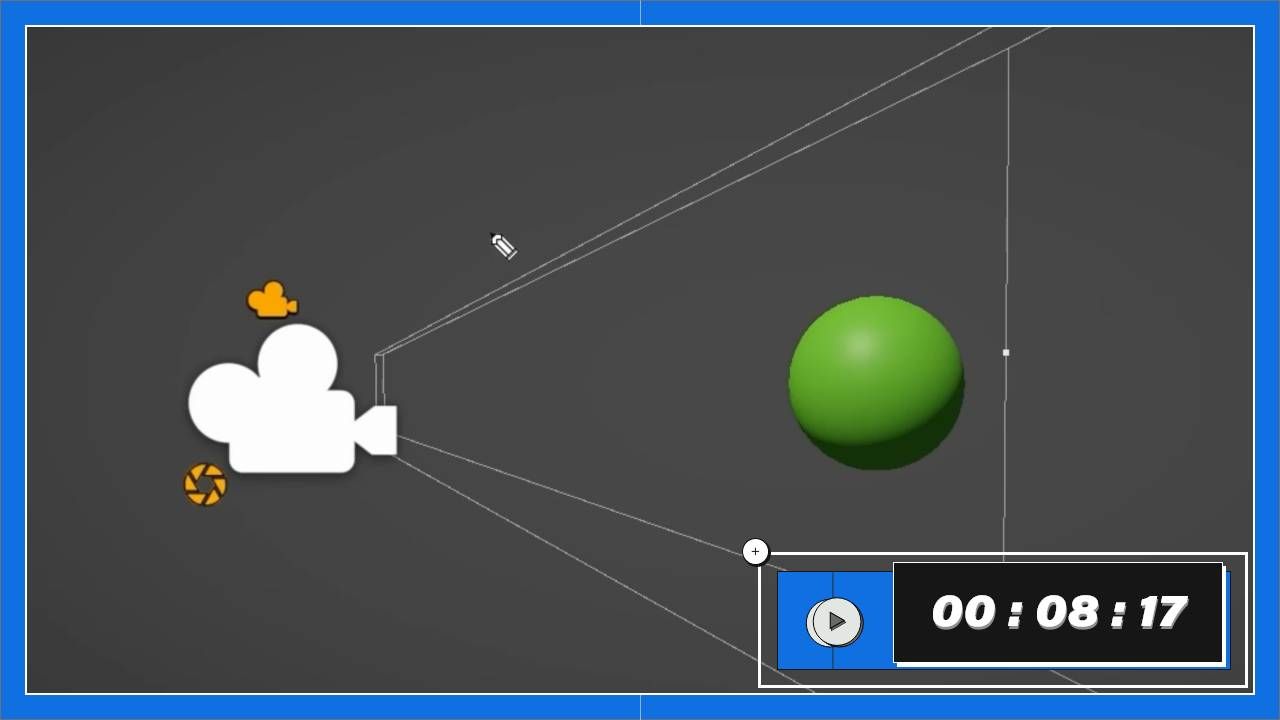
How Do Shaders Work?
Let's dive in to the basics of shaders and how they work before we get into the finer details.

Node-based Shaer Interface
Learn about the node-based Shader Graph in Unity! We'll get the layout optimized for working on shaders and a quick overview of commonly used nodes.
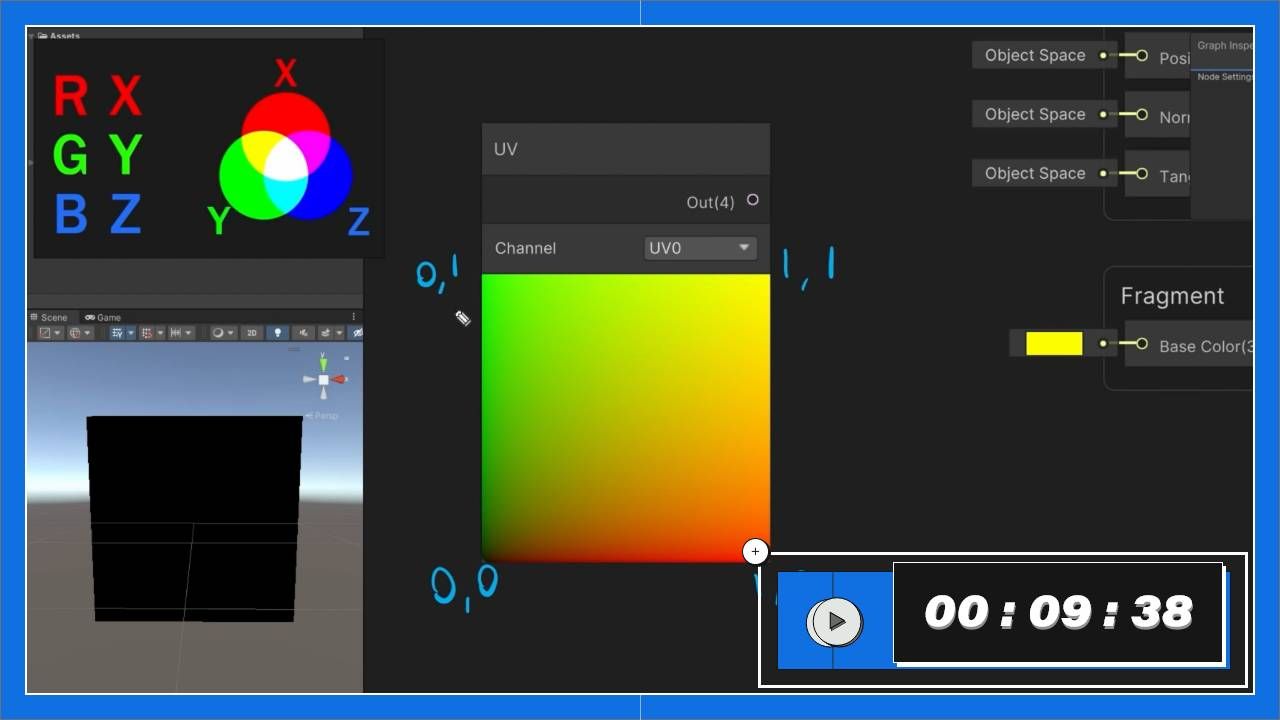
Vector UVs - Texture Sampling
There are a lot of different values used in shaders, so let's dive in to UVs and vector basics!
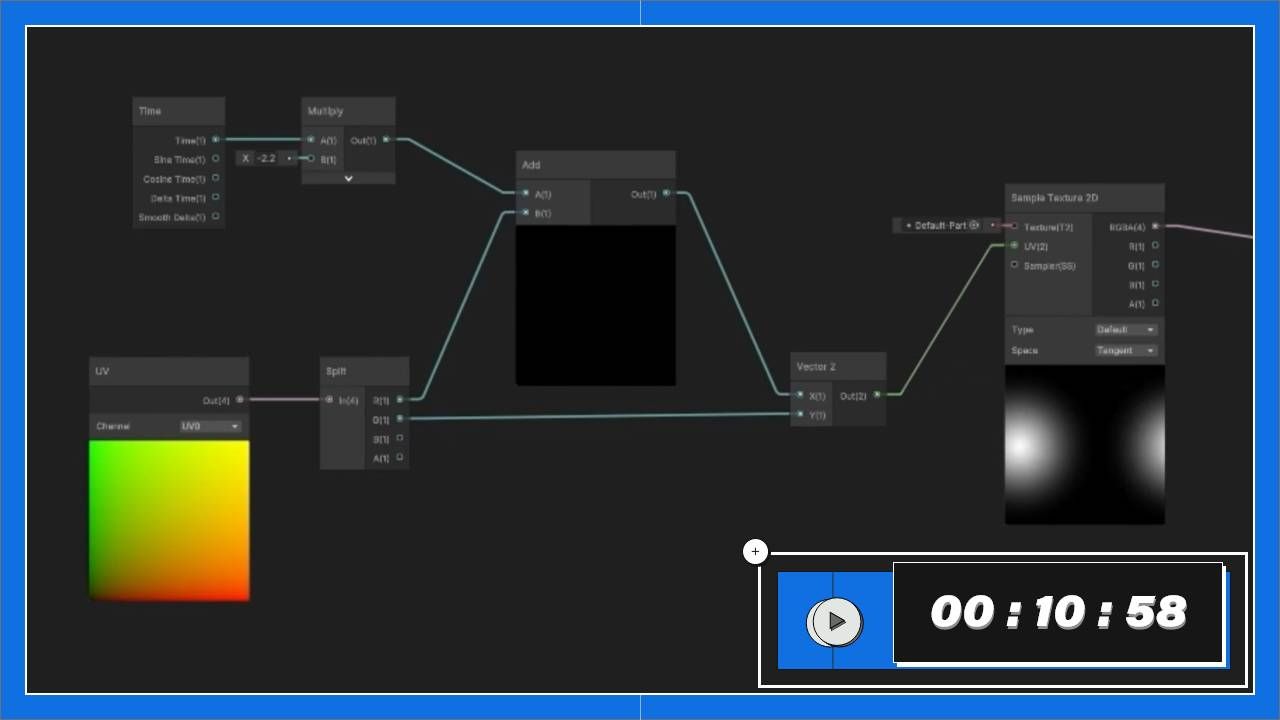
Adding & Panning
Now that you've got UV basics down, we can use them in our shaders to make our textures pan.
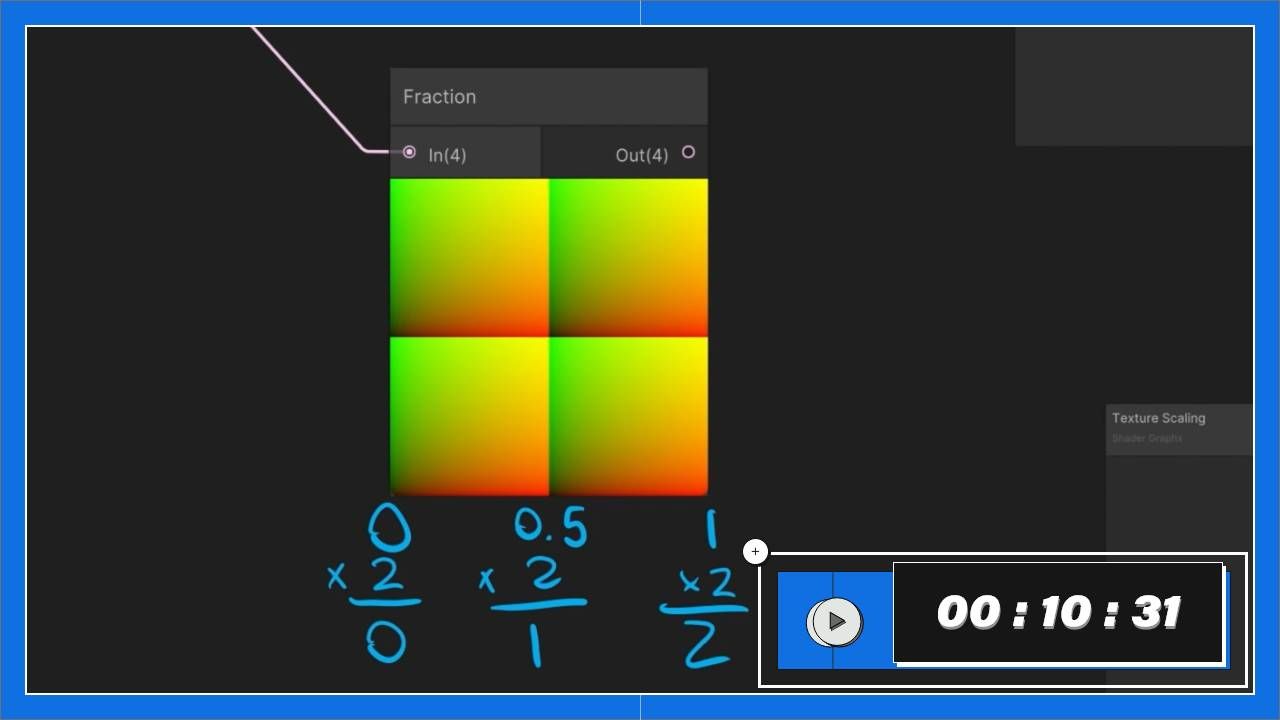
Multiply & Scaling
Scaling is the second major texture operation we can do in a shader! Follow along and learn more about the Multiply node and the Tiling and Offset node.
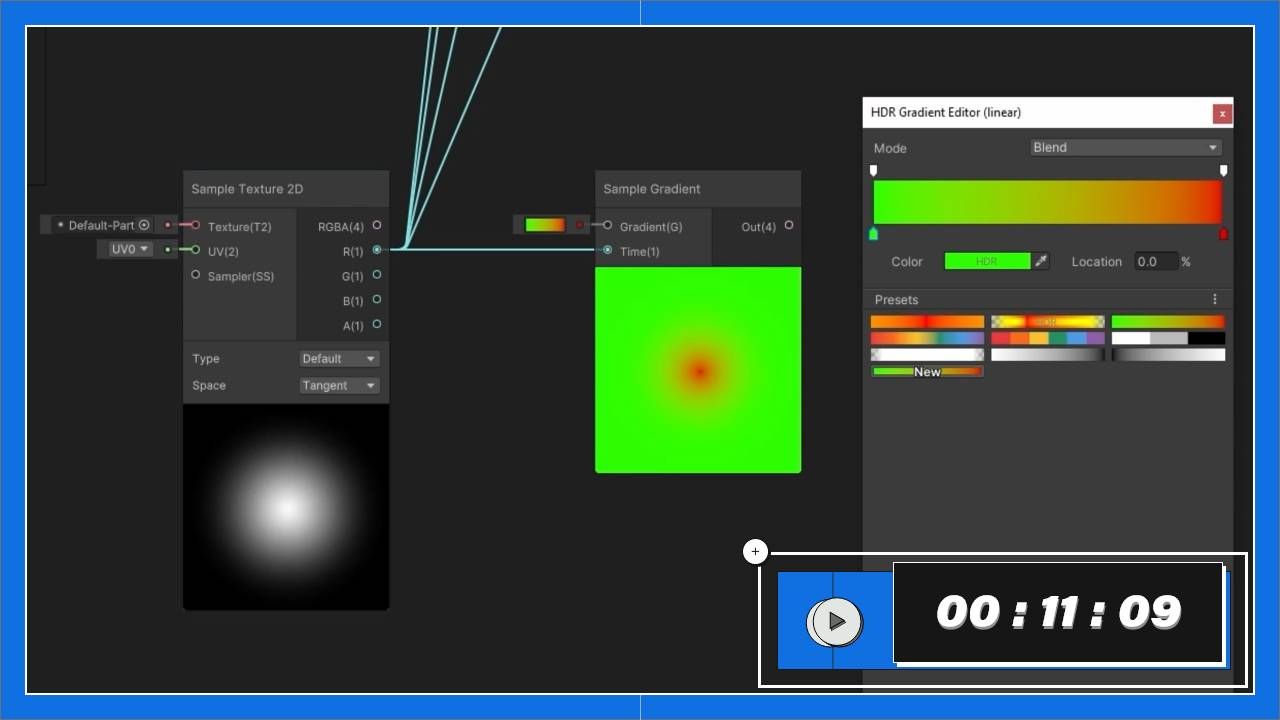
Adjusting Texture Intensity
Knowing how to control texture values can be powerful! Learn more about how basic math can be used to affect texture color.
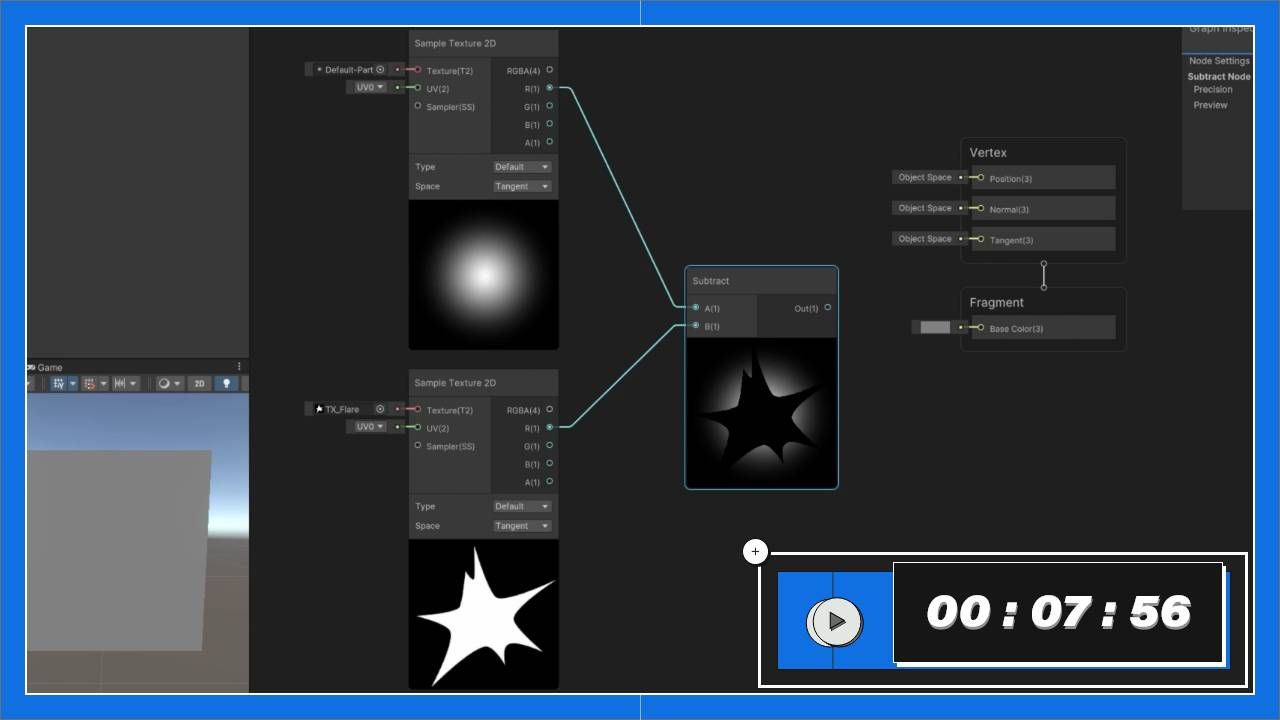
Combining Textures
In VFX, we often use secondary textures to make adjustments to the first! Start creating shaders that can have masking effects and animation with this lesson.

Step, Smoothstep & Dissolve
Step and smoothstep nodes can be used for converting soft textures into hard-shaped textures, but also create dissolve animations. Learn about the differences between the two, as well as the very useful Sine and Remap nodes.

Color Lerp & Gradients
It's time to add color to our shader! Colored textures can be manipulated with the same nodes we've used for grayscale textures, so let's get to it!

Distortion
Distortion is great for adding motion to effects. In this lesson, we'll learn the basics of distortion, how it works, how to change it's direction and how to add motion to it.
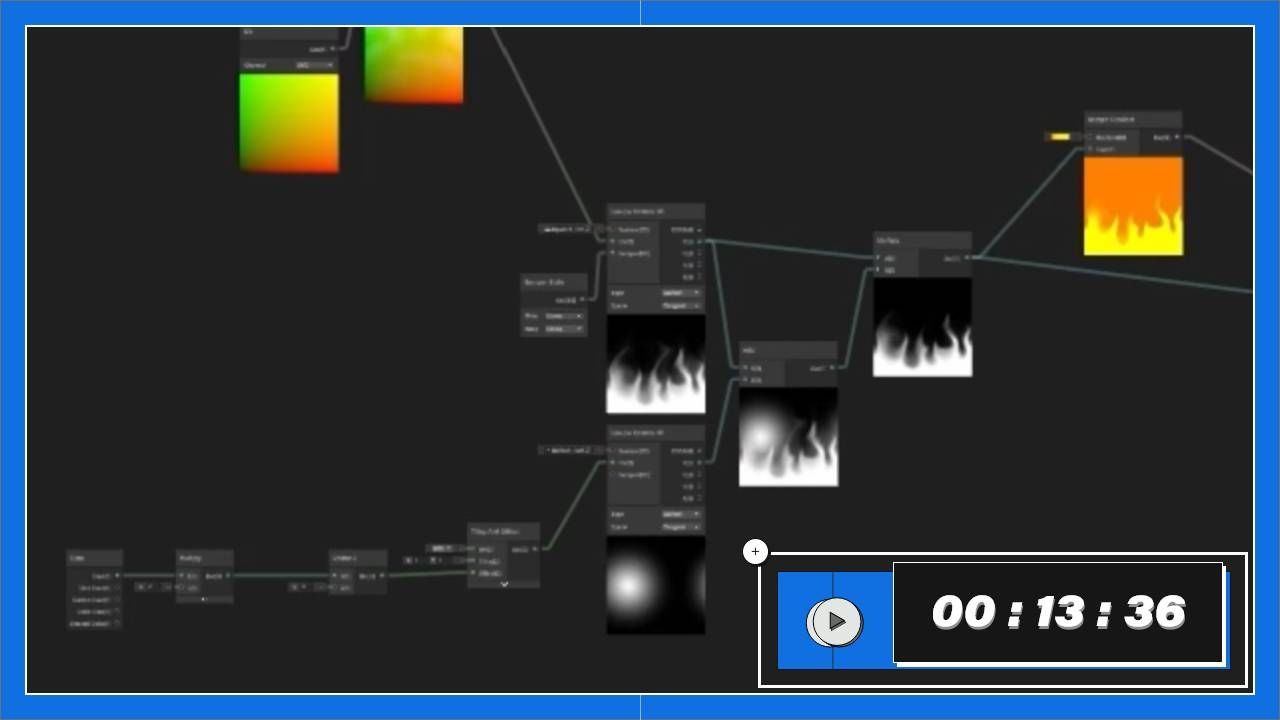
Creating a Full Shader
Now that we've covered all the basics, it's time to create a complete shader that we can use for a fiery effect.
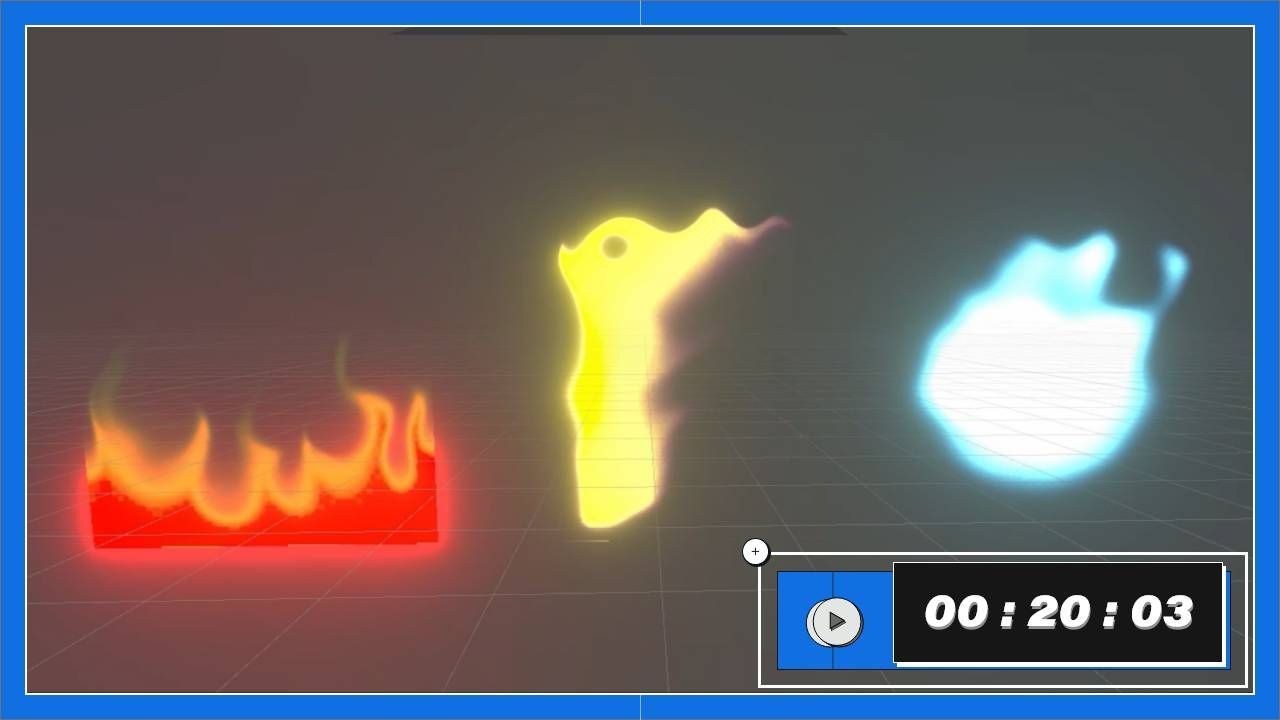
Properties & Shader Variants
Properties are super useful in Unity. You cam make adjustments to a shader and use it for many different FX.
Learn how to adjust variables in your materials once they are setup in our shaders. This allows us to use a single shader and change things like color and textures on the fly.
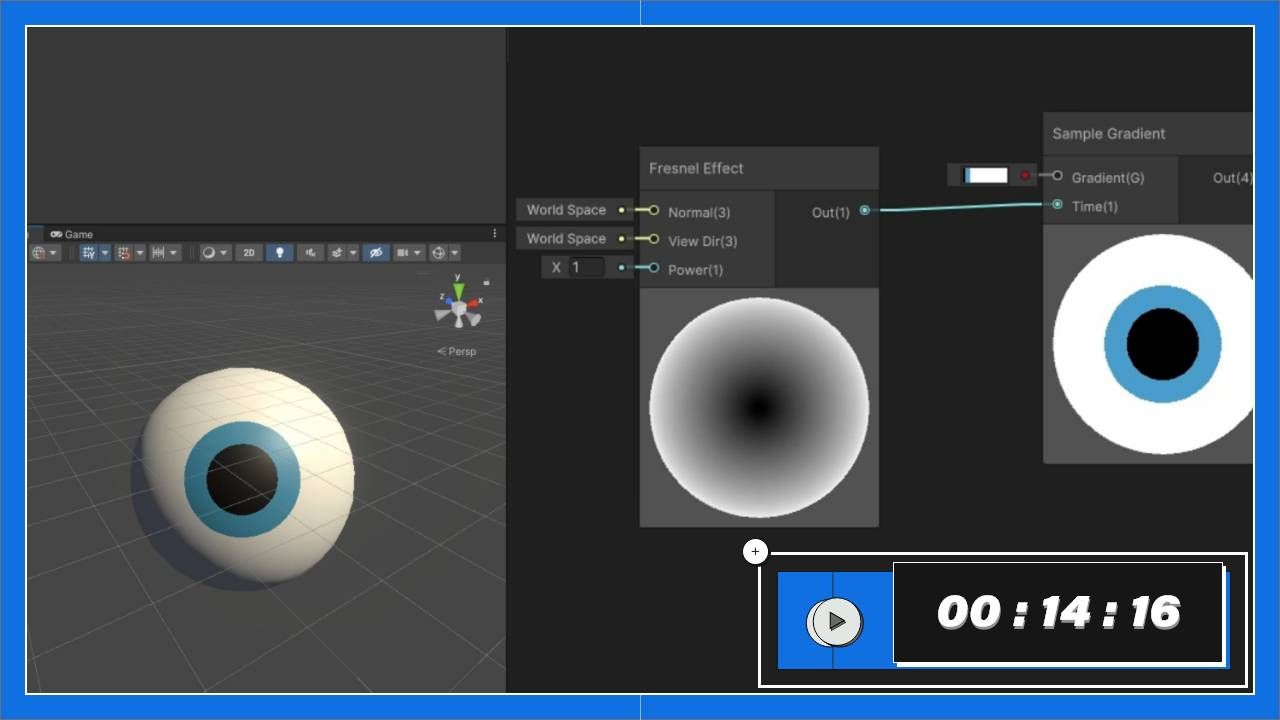
Surface Direction Fresnel
Fresnel effects are great for things like magical orbs and softening soulercoster edges!
Dive into this lesson to learn how it works, and how to put it to use.

Using Positions & Distance
Using Position nodes and distance, we can start creating shaders that are affected by the environment!
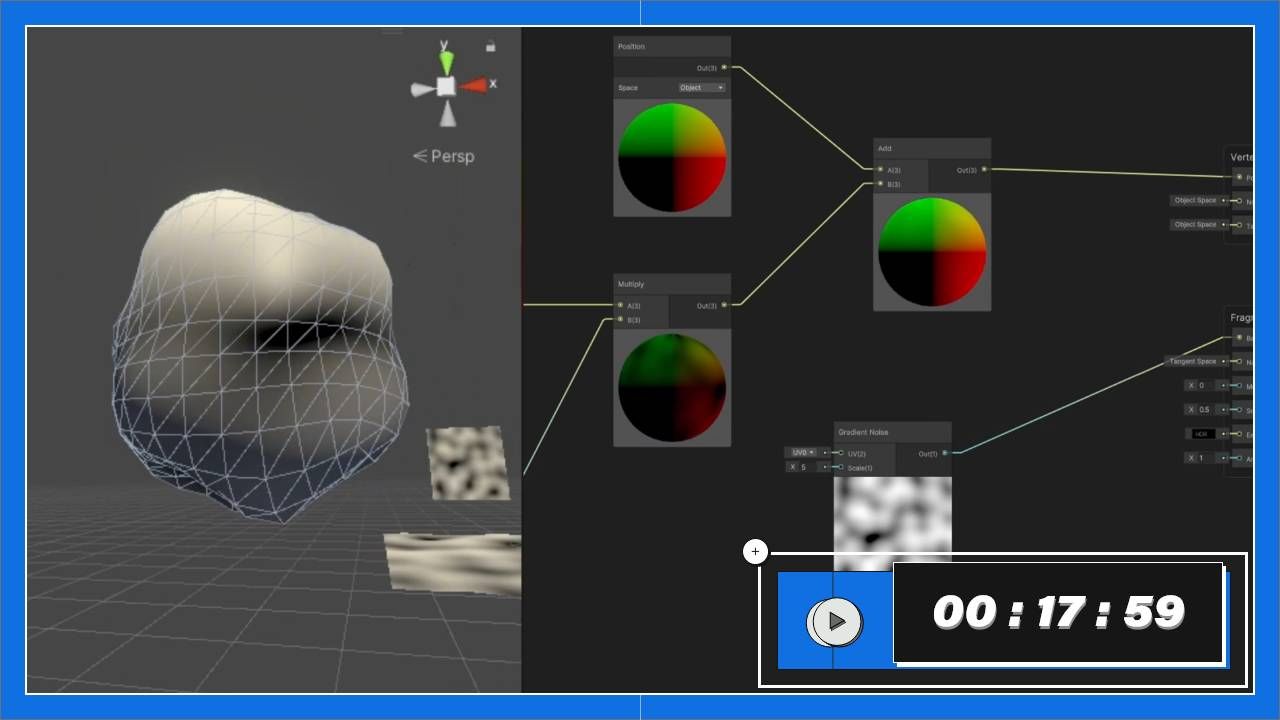
Vertex Offset
This time, we're going to learn a new tool in our shader arsenal: Vertex offset. Follow along and learn how to manipulate the verecy's of a mesh to get all kinds of fun results!
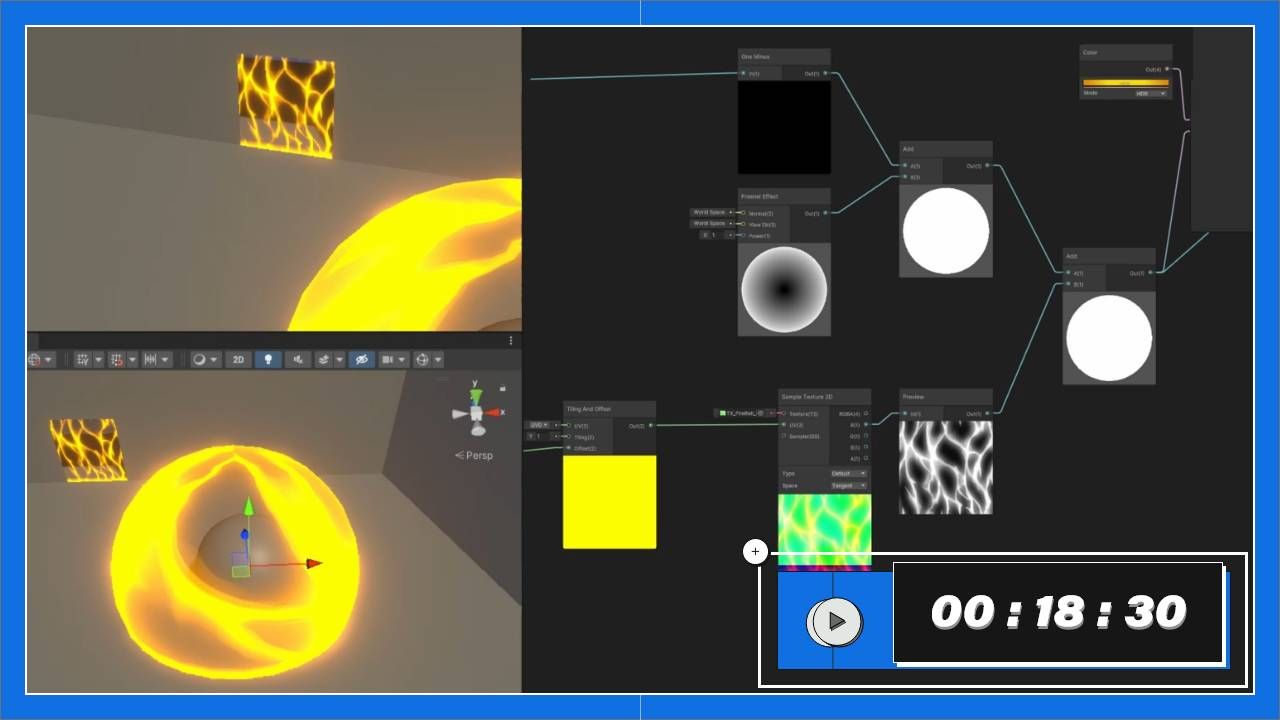
Depth Fade
Depth fade is all about the distance between objects and the camera, but we can put it to use softening object intersections, as well as creating simple fog and shadow effects!

Shaders & Particle System
It's time to wrap up this series by diving into how to connect shaders to particle systems, and the neat tricks we can do by storing data in vertexes as a result.
What members say about VFX Apprentice

Bruno Cano
VFX-A All Access Member
Joining VFX Apprentice was, for sure, the best decision I've made in my early VFX career. The courses are great and the mentors and students are always trying to help. I just love being here!

Ron Anati
VFX-A All Access Member
Been in love with game VFX since I can remember. I joined VFX Apprentice after a LONG time thinking about it, and loving every moment of it, studying whenever I can.


Learn 2D and 3D FX with VFX-A All Access
All 2D FX, 3D VFX, and Advanced courses are included with VFX Apprentice All Access. Learn stylized and real-time FX from professional artists and animators.
LEARN MOREMore FX Courses Like This
Take what you learn in this course and apply these skills to creating FX for games and animation.

Unity Block-in VFX
3D FX: Level One
This course is designed to help you start making effects in the Unity game engine, regardless of your experience level. Learn how to get started with a collection of block-in VFX like fire, hit impacts, and explosions.

Elemental Studies in Unity
3D VFX: Level One
Bring the elements to life in Unity! Learn how to use a technical approach to VFX as you create fire, water, lightning, and more.

Intro to Materials for Unreal Engine 5
3D VFX: Level One
Learn how to use and navigate a node-based Shader interface in Unreal Engine.

